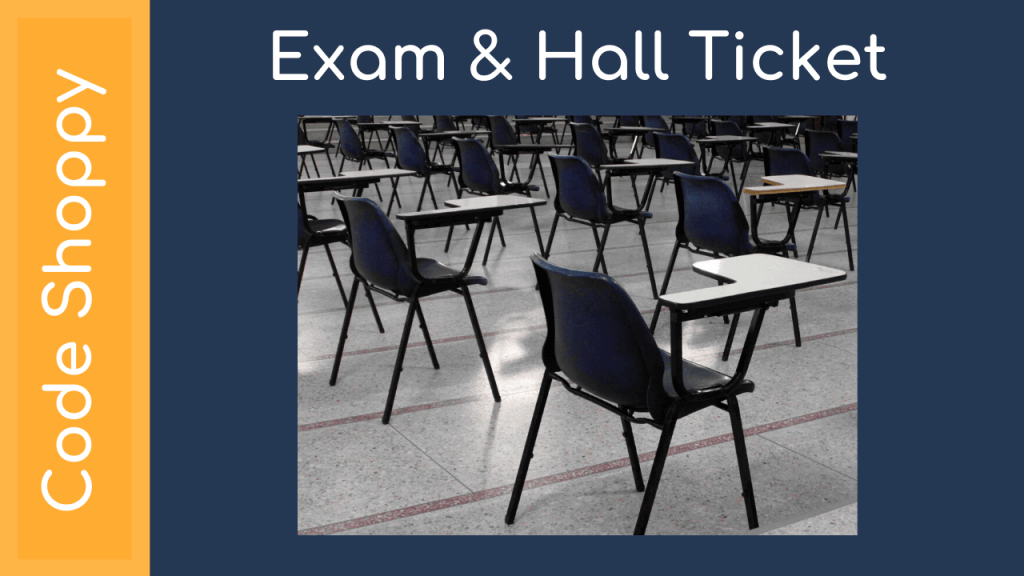Exam Hall Ticket Management System
Detection of Anomalous Behavior In An Examination Hall Towards Automated Proctoring
Most of the research work in the field of video surveillance systems has become very popular due to high security concerns and low-hardware costs which have been carried out in the last decade. This section presents the ones which are more relevant to this work. Many issues such as behavior understanding in crowded scenes, nurture care institutions, law application, building security and traffic analysis.Surveillance videos have shown to capture the actions of the subjects that either display normal or anomalous behavior. Object recognition, specifically face recognition has been implemented using the Viola Jones algorithm. The two activities that were focused on were passing cheats and viewing neighbor’s answer sheet. Interest points are measured from the individual frames using SURF and interest points are detected using the Hessian Matrix Approximation.

The actions of human behavior are viewed as a stochastic order of actions [4].In the environment of examination halls, tracking of behavior and training the system for various anomalies is critical to avoid any false negatives. Behavior detection has been implemented using spatial-temporal shape and flow correlation [5]. The training templates are extracted and used as a reference. Mean shift algorithm is implemented to segment the video. Each frame of the input video is compared with the template image and the matching distance is calculated. Setting an appropriate threshold ensures location of potential matches in the video.Another condition in video-surveillance is in the outdoor environments. It focuses on detecting mobile objects in outdoor scenes. A reference image is used that contains the features that are well trackable.
A feature correspondence is found between pairs of adjacent frames from the input video. Motion detection is tracked using the Lucas-Kanade tracker [6]. Bad tracked features are rejected and new features that contribute to new image areas are included, for better performance. Thus, this system depends on the selection of a set of features that are robust and traced to anomalous behavior; this is a challenge as the specific patterns may well depend on the conditions under which the video is recorded.In most of the contexts it is necessary for us to analyze the videos in terms of detailed features, which is inefficient in terms of accuracy and cost. A lot of research work is going on in the field of detection of abnormal behavior in examination halls. In examination halls, abnormal behavior can be detected by specifying the abnormal/suspicious activities and thendetecting them. The anomalies are then identified and reported to the necessary authorities. The paper has automated the system to detect any human behavior remotely in the Examination Hall. Once the systems are given the video feed it detects the actions automatically. The system can then immediately alert the relevant authorities who can respond to the action appropriately [7].
This paper has detected abnormal behaviors in exam hall for students sitting in a single row and also multiple rows.A. Data SetTraining and testing videos were recorded in real time in a class room. Initially the system was tested for 3 people sitting in a single row for all abnormalities in class room such as peeking, signaling, passing paper and turn around. Later, it was also tested for students sitting in 2 rows in a class room. There videos were of resolution 720X1280 and used for training the classifier and testing different abnormalities. Using the training data it was able to distinguish normal behavior from abnormal behavior. Each video is divided in to 100 frames per second. Time taken to detect normal and abnormal activities is explained in TABLE I.Fig. 4 (a) – (d) represent peeking, passing paper multiple peeking and signaling actions, respectively, for students sitting in a single row, Fig. 4 (e)-(g) represent turning around, passing paper and signaling actions for multiple rows of students. Code Shoppy
In the area of machine learning confusion allows visualization of the performance of an algorithm. TABLE II indicatesConfusion matrix of the system. Each column of the matrix represents the instances in an expected class while each row represents the instance of the actual class. Confusion matrix reports the number of false positives, false negatives, true positives and true negatives. This allows more exhaustive analysis than mere percentage of correct guesses. All the diagonal values indicate the accuracy of each action detected.A. Evaluation FactorsIn pattern recognition and information retrieval with binary classification, the performance of a model is determined by correct predictions that reflect the actual events. When a model is trained, it needs a “labeled” data set which contains the actual values which it is trying to predict. Later the model can be evaluated against labeled data which was not used to train the model.True positives and true negatives are the observations which were correctly predicted, and therefore The terms “false positive” and “false negative” can be puzzling. False negatives are observations where the actual event was positive. The terms refer to the interpretations and not the actual events [14]. On this basis, the Precision and Recall are defined asPrecision looks at the ratio of correct positive observations.denominator is the count of all positive predictions, includingpositive observations of events which were in fact negative